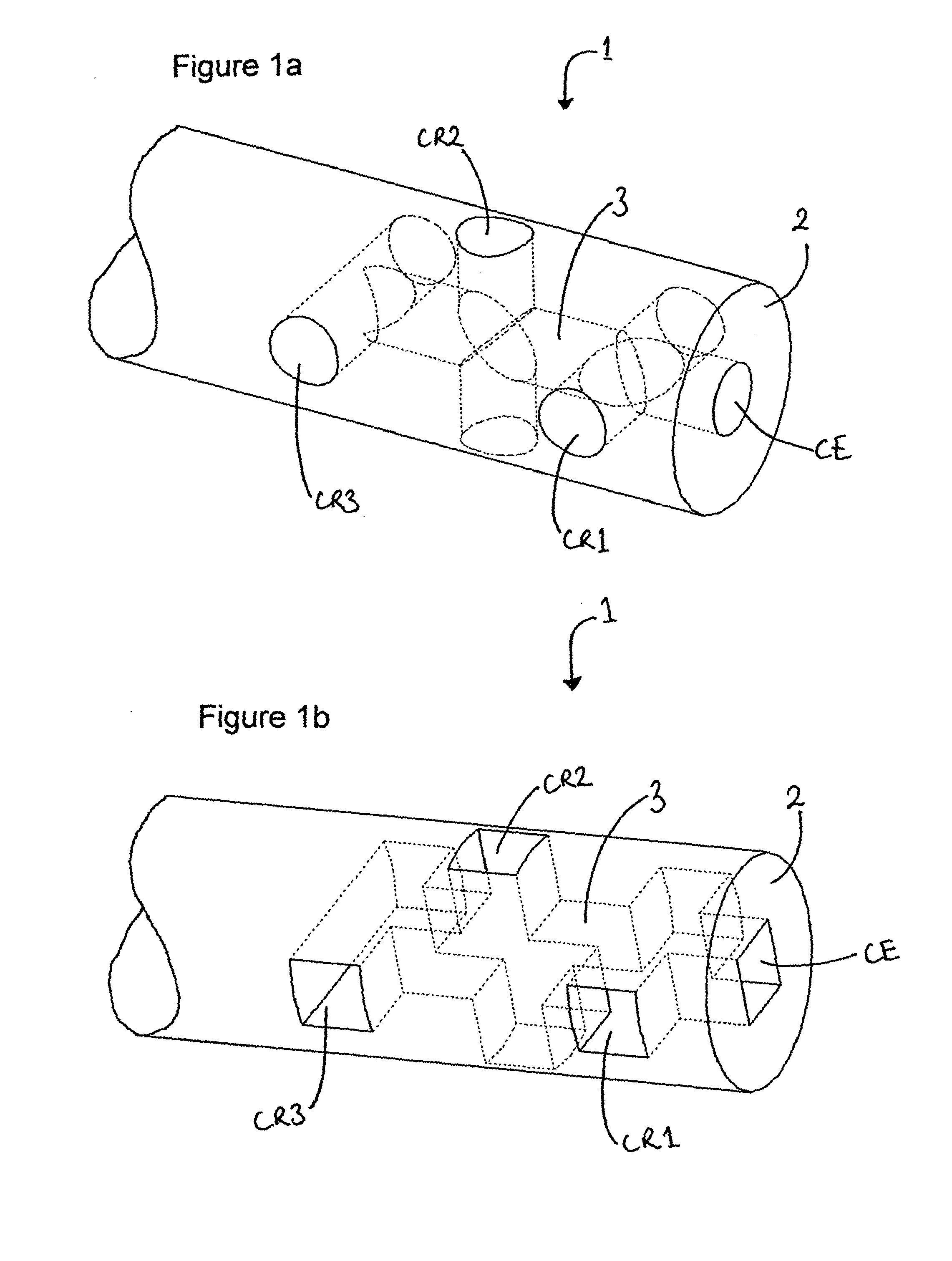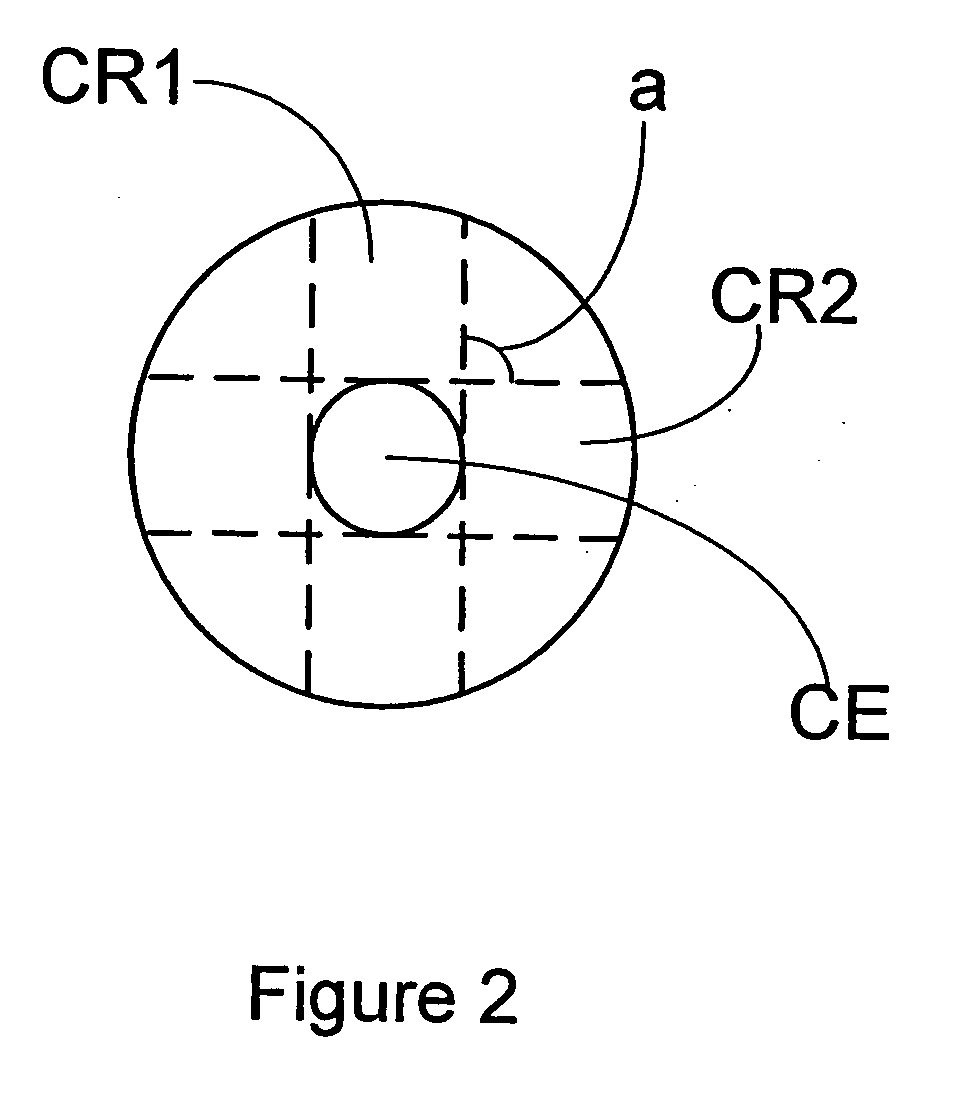Fibre optic sensor
a technology of fiber optics and sensors, applied in the field of fibre optic sensors, can solve the problems of mechanical limits on the size of cells which can be generated, inherent limitations on the intensity of emitted signals, etc., and achieve the effects of reducing scattering reducing the intensity of incident light beams, and long path length
- Summary
- Abstract
- Description
- Claims
- Application Information
AI Technical Summary
Benefits of technology
Problems solved by technology
Method used
Image
Examples
Embodiment Construction
[0016]FIG. 1a schematically depicts the sensing region 1 of a fibre optic sensor of the invention and FIG. 2 provides an alternative view of the same sensor through a cross section of the sensing region. The sensing region is typically located at or near to the distal end, or tip, 2 of the fibre. During use, the sensing region is the part of the fibre which is in contact with the medium under study.
[0017]The sensing region comprises a cell (CE, CR1, CR2, CR3) which typically contains an indicator for the analyte. The indicator may be any material whose optical properties are altered in the presence of the analyte. Preferred indicators are those containing a fluorophore, although other indicators suitable for use in optical fibres are also envisaged, for example other luminescent indicators or absorbent indicators. Examples of suitable indicators are pH sensitive indicators, potassium indicators such as crown ethers, and indicators containing a boronic acid group and a fluorophore wh...
PUM
 Login to view more
Login to view more Abstract
Description
Claims
Application Information
 Login to view more
Login to view more - R&D Engineer
- R&D Manager
- IP Professional
- Industry Leading Data Capabilities
- Powerful AI technology
- Patent DNA Extraction
Browse by: Latest US Patents, China's latest patents, Technical Efficacy Thesaurus, Application Domain, Technology Topic.
© 2024 PatSnap. All rights reserved.Legal|Privacy policy|Modern Slavery Act Transparency Statement|Sitemap



